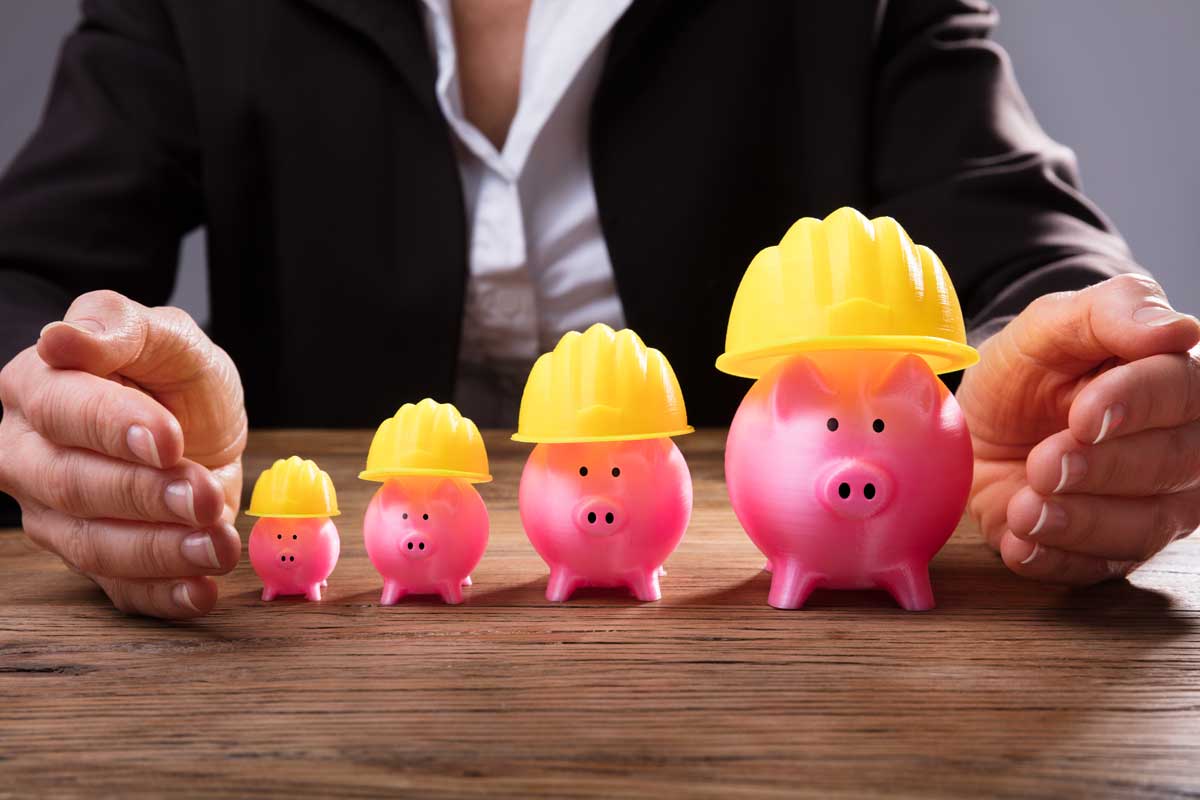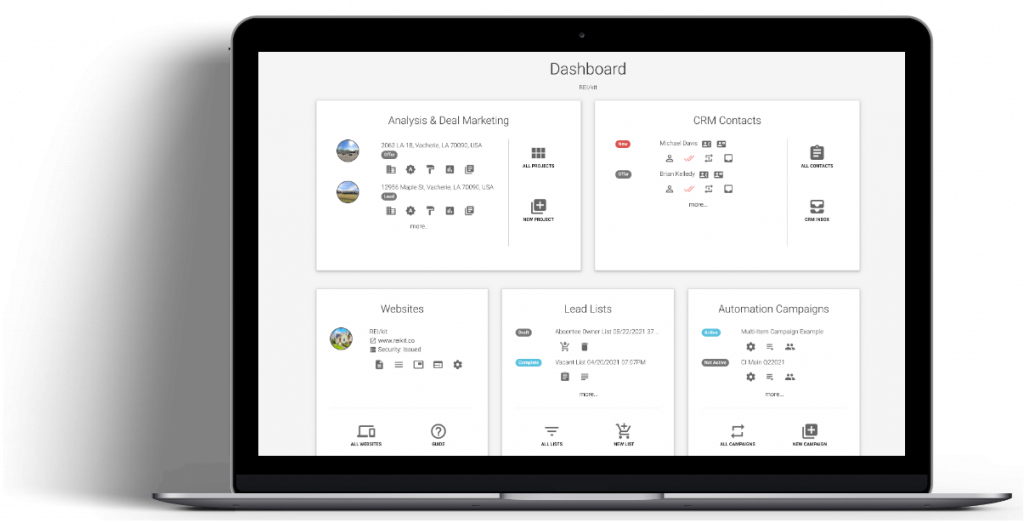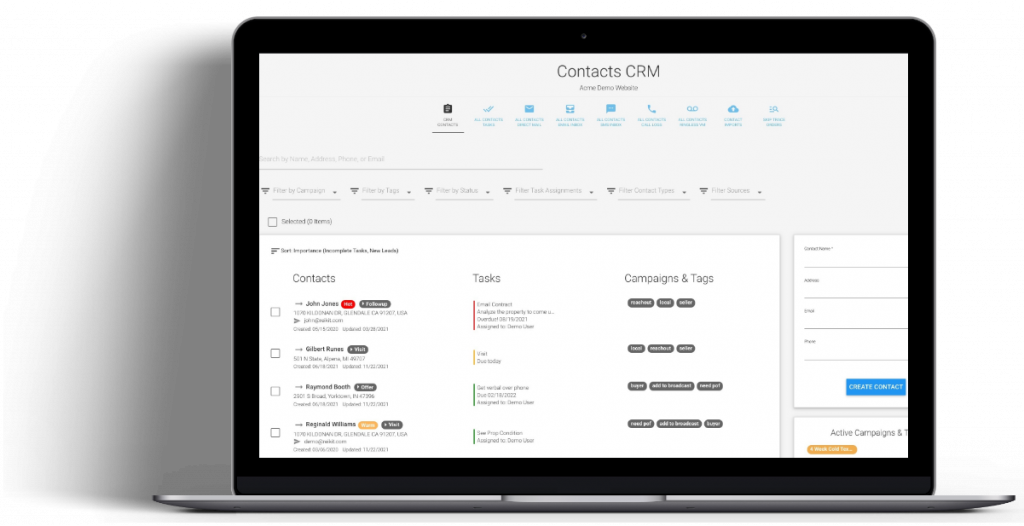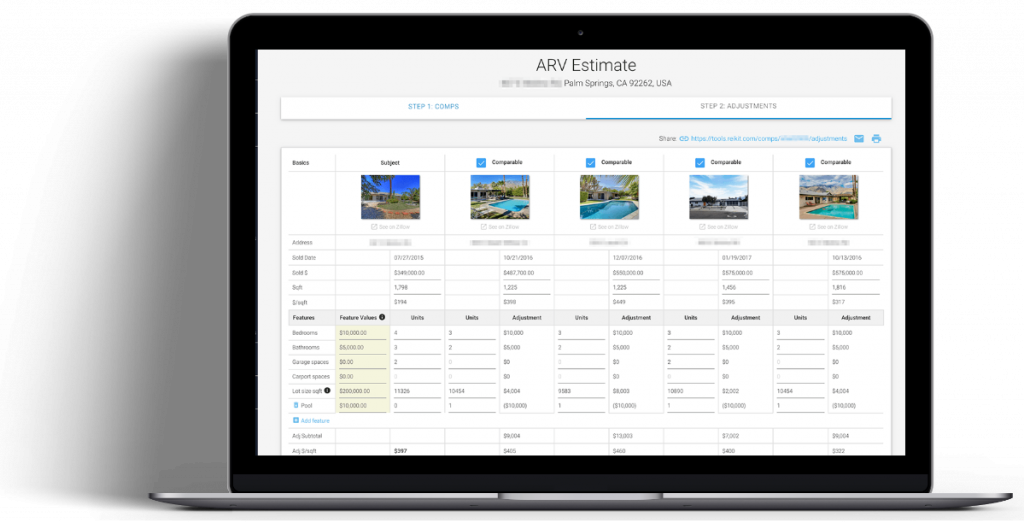
Making money on house flips is getting harder and harder as margins get squeezed due to increased competition. To overcome this, you have to become smarter at where you spend your money on the flip, and where you save it.
The good news is that with a little knowledge, you can find many ways to mitigate budget risks, cut costs, and stretch your budget beyond what might at first seem reasonable.
Let’s take a look at some of the best house flipping tips to help you save money every time, and make more money on each flip.
Purchase, Sale & Holding Phase
Before we talk about saving money on materials used on a flip, let’s talk about some easy costs that you can control to improve your margins before you even get into the flip.
1 Get the correct purchase price in the first place
Since you make your money when you buy, the most important cost that you can control is the cost of the property when you first purchase it.
Determining your purchase price is not always straight forward, which is why I have developed the house flipping software in the first place.
The extensive tools and data in the software help you perform the most comprehensive deal analysis of your flip starting from helping you determine the resale value of your property, all the way to determining your purchase price based on your desired profit.
2 Negotiate Rehab Bids with Multiple Contractors – The More, the Better
Although property rehab construction costs should be pretty standard for a particular zip code, you will still find many contractors who will pad their construction estimates by as much as 500%. With this in mind, it’s up to you to know what those costs should be, and to solicit as many itemized rehab estimates from as many contractors as practicable to negotiate the best pricing.
If you don’t know how to estimate rehab costs, then you should begin by educating yourself on the topic, first starting with this post on how to estimate rehab costs for real estate. Next, if you haven’t read J Scott’s book on estimating rehab costs, then stop right here and add it to your Amazon cart.
In order to arm you with the data to be able to understand your rehab costs and understand what your construction costs estimate should be, the PRO version of REI/kit real estate flipping software includes thousands of property rehab construction costs that you can use to itemize your own rehab estimate. You can then use that same estimate to compare itemized bids from your contractors and understand where they are padding their estimates.
To do this, when you are soliciting bids, make sure that you set the expectation with the contractor that you are looking for an itemized bid. They absolutely hate doing those, and some will flat out refuse to bid on the job. Good, let them self-select out. You don’t want to work with those contractors because they will have surely padded their estimate beyond reason anyway.
3 Shop Around and Negotiate with Your Hard Money Lender
Hard money lenders are a little more competitive with each other than contractors are, so their rates will be closer to each other and more standardized between them. Given that fact, you should be able to get fairly similar rates from different lenders.
But it still makes sense to shop around, because even a 1% rate improvement can make a big difference in the profitability of your deal.
Because lenders will typically discount their rates based on experience, you can use REI/kit to your advantage here as well.
With REI/kit flipping software, all of the data and expert analysis that you used to determine that the deal was worth doing, is the same expert data that that the lender will need to underwrite the deal.
Even if you don’t have as much experience, when you show a professional pitch to your lender supported by data and analysis, this gives you that much more negotiating power, showing that you know what you’re doing, and that their investment is safe.
4 Negotiate Commission with Realtors
Along the same line, negotiating with realtors should be a top priority to make sure that you’re starting off each project with the best possible budget, just in case things go south.
If possible, you should try to form partnerships with realtors, forming a symbiotic relationship. After all, you’ll be providing them with business once your rehab is complete, and smart realtors will want to direct you towards future flips once they see that you know your stuff.
Everyone can make money with this kind of alliance, and that shouldn’t stop you from negotiating the rates on either the buy side, or the sell side, or both.
For example, you can find a realtor that will do the transaction on either the buy or sell side for a flat fee. In another arrangement, you can negotiate that they rebate you part of the buy commission for a guaranteed listing on the back end.
5 Consider Getting a Real Estate License
This will take some more time and effort, but it could pay dividends quickly. Real estate agents make commission on both the buy side and the sell side, and you could capture that income by taking care of this part of the business yourself.
This obviously requires a lot more work on your end, but for the purposes of profitability, you can’t beat the savings that you can get on commissions, and that can mean the difference between making money and losing money on the deal.
6 Negotiate the Fee With the Wholesaler
If you are working with a wholesaler, they may have some room to negotiate their fee. Ultimately they don’t want the property so if you are the only real prospect of purchasing the property, then technically you hold all the cards. But don’t burn your bridges. If the deal makes sense, then negotiate a fair fee so that they continue to bring you more deals that make sense.
7 Shop Around for Title Companies
Not every title company is the same. It’s worth it to look around and find a good title company that charges lower rates for title runs and insurance.
This may not add up to much in any single deal, but over the span of many flips, each $100-$500 saved per title can add up to a lot. Imagine what you could do with the money saved from 10, 20, or 30 house flips.
8 Get an Inspection Without a Report
A lot of home inspectors will come out to your property and give you a verbal report of what they see for a much-reduced fee. You don’t really need a report anyway. Just walk around with the inspector with your camera phone and record the whole thing. Now you can refer back to it as if it was a written report for a fraction of the price.
Additionally, you should also get your inspection legs, and the fastest way to do that is to study the same book inspectors use to take the National Home Inspector Examination.
9 Use a Good Credit Card with Cashback Rewards
If you’re not using cash to buy your materials, it’s smart to put it all on a credit card that rewards you for using it. There are tons of great programs and financial institutions that offer credit cards with good cashback or rewards incentives.
These cards literally allow you to make money by spending money; so long as pay off the balance you accrue consistently and on time.
Planning Phase
Before I talk about tips to find the best deals on supplies, let’s talk about planning.
10 Plan the Rehab
Oftentimes, the best ways to save money during a house flip can come before the rehab portion has ever begun.
It’s not glamorous, but it’s important to know how to order your tasks so that you minimize the amount of time holding the property. Having a clear-cut timeline is critical to staying on budget and keeping your overall costs low.
You can read this post on scheduling your construction tasks to get an understanding on how to perform this planning activity to ensure the shortest holding time.
For instance, hiring your vendors and ordering your supplies should always be done before construction even begins. Windows and doors, and cabinets for example, can have a significant lead-time so they should be ordered immediately. This will allow construction to go ahead as scheduled, rather than forcing the construction crew to have to wait on them extending your holding time.
To help you with planning these tasks you can use these free smartsheet project templates.
11 Don’t Over Improve
Most of us are invested in our work and want to give every project our best effort.
While there’s nothing wrong with this, it’s important to understand where and how much of that effort should be spent based on the goal of your enterprise.
The goal of your flipping business is to make money, by providing people a product that they are willing to pay for. Thus, you have to very carefully determine what the market demands, and how to supply it at a cost that is within your profit margins.
Over-improving a house until it’s too good for its local neighborhood will cost you time and money during the rehab, and you’ll find that you won’t be able to sell at a profit. While it’s tempting to treat a flip as a passion project, remember to think of it as a business.
Real Estate Rehab Phase
So let’s talk about some of the cost savings that you can get on materials for your rehab.
12 Rent a Larger Dumpster
There are smart ways to save money on dumpster rentals if you know how much debris you will have. Typically you will want to get the biggest dumpster that will capture all of your debris (but not too big) so that you save on haul away fees on multiple hauls of a smaller dumpster.
13 Need Appliances? Try Scratch and Dent Stores
When it comes to the nitty-gritty of rehabbing a house, you don’t always need to get supplies or appliances for market cost. Instead, you can try various scratch and dent stores or other aftermarket vendors to find appliances that can be refurbished or repaired to near-pristine condition. This is much cheaper than buying a new refrigerator, for instance; you’ll find the price differences between used and new appliances is truly massive.
14 Use Discontinued Flooring Material
Just like with appliances, you can get great discounts on flooring material, such as certain woods and many kinds of tiles, by using discontinued flooring material at bulk vendors or liquidators. Bathroom and kitchen flooring, in particular, can benefit from you buying all of the tile necessary from a bulk vendor for a low cost when that particular style is “discontinued”.
15 Use Remnants for Countertops and Vanities
Go visit your local stone yards to look for remnants of countertops. Since they have already cut out a lot of usable stone from the slab, they don’t have as much demand for their remnants, and you can negotiate to get those remnants for as cheap as 10 cents on the dollar. This is a significant savings over buying new uncut stone slabs at full market price.
16 Check Out Re-Store/Recycling Warehouses
Speaking of finding discounted materials, you can check out recycling warehouses for huge amounts of bulk material, such as wood, tile, glass, vanities, and sinks. You’ll be able to find all sorts of reusable materials for your rehab without paying market-price new materials. Visit recycling warehouses when you can, and you will often find something useful that you will be able to incorporate into your flip.
17 Combine Neutral Paints
White or beige-colored paints can often be mixed, allowing you to save money on paint costs in the event that you need to repaint most or all of a property. Paint costs add up very quickly, so the fewer gallons you need to churn through, the better. Just be sure that any paints you mix are of the same type: acrylic, oil, or latex need to be used with similar paints, not mixed together.
18 Become a Home Depot Pro Member
Home Depot Pro is a great program that you can join for a variety of cost-saving benefits. The potential uses for this membership include discount on bulk material orders, special offers, huge savings on paint purchases, cash-back rebates, and efficient delivery options.
19 Consider Renting Tools
If you’re doing a lot of the work yourself some tools are more cost-effective to rent instead of buying, particularly if it’s a rare tool or project that you don’t foresee needing in the future.
20 Craigslist
You can find virtually anything on Craigslist, from building supplies to bathroom cabinets to gently used or scratch and dent appliances. You can also use Craigslist to sell certain items that aren’t going to stay in your rehabbed house. This cash can then, of course, be funneled back into the project at large.
21 Clearance Racks are Your Friend
A lot of tips for flipping houses might seem small or insignificant, but every penny can count in this business, especially at the beginning. There are often treasures at clearance racks that you can get for amazing bargains, ranging from simple office supplies to materials you can use to decorate a freshly-flipped house. Stores of virtually every type have a clearance section: clothing, furniture, office, or home improvement. Stop by and see what’s on those shelves.
22 Repaint Cabinets
If you don’t have to replace the cabinets, then don’t. A couple of coats of hard cabinet paint can be almost as good as brand new cabinetry.
23 Only Change Cabinet Doors
If your cabinet boxes are in good shape then just replace the doors for a third of the cost of replacing the old cabinets. Throw in some soft close hinges that you got on Ebay and no one will know the difference.
Summary
There are all kinds of smart ways to improve the profitability of your flip whether by buying right, or planning right, or smartly saving money on materials.
While some of these individually might not seem like a large savings, together they can add up to thousands of dollars in savings over the span of your flip. If you add these over the span of multiple flips, the savings really add up.



